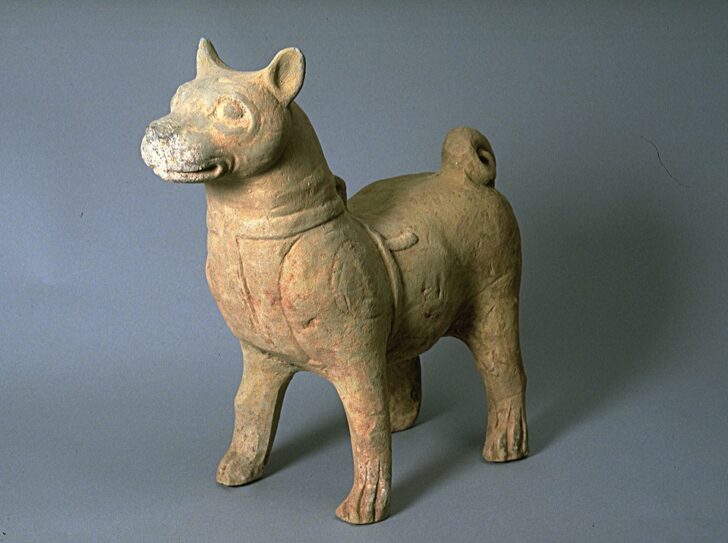Dog
Chinese

Description
Chinese ideas of the afterlife required that a tomb be fully equipped with the paraphernalia to keep the departed soul comfortable throughout the coming ages. In earlier centuries live humans and animals were co-buried with kings, but by the Han dynasty, the dead were content with clay models, and almost any family of reasonable means could provide for their ancestors. This congenial creature is one of hundreds excavated from Han period tombs, evidence that the dog was well established as man’s best friend by a thousand years ago.
Maribeth Graybill, Senior Curator of Asian Art
Exhibited in "Flora and Fauna in Chinese Art," April 6, 2002 - December 1, 2002.
Chinese ideas of the afterlife required that a tomb be equipped with all the basic household paraphernalia to keep the departed comfortable in the netherworld. In earlier centuries live humans and animals were buried in tombs with kings, but by the Han dynasty (206 BCE- 220 CE), thanks in part to the teachings of Confucius, the dead were buried with clay models, and almost any family of reasonable means could supply mortuary pottery for their dead. The dog is standing at attention with pointed ears, sturdy legs, and a coiled tail. An elaborate harness is carefully articulated with a chest piece in front and straps tied around the torso terminating in a ring for a leash on the back of the neck. This congenial creature is one of hundreds excavated from Han-period tombs, evidence that the dog was well established as man’s best friend two-thousand years ago.
(Label for UMMA Chinese Gallery Opening Rotation, March 2009)
Subject Matter:
Along with horses, birds, and other animals, dogs are considered to be sacrificial animals in ancient China. By the Eastern Han Dynasty ceramic sculptures of dogs had become commonplace in tombs as mingqi (明器), or grave goods for the afterlife. They were usually sculpted by hand, with close attention paid to the individualization of several different breeds.
Physical Description:
This red earthenware dog sculpture stands at attention with a stocky body on four muscular legs, paws carved to differentiate toes, tail curled up at the hind quarters, its head atop a thick neck, smiling mouth with deep set large eyes and pointed ears, a harness strapped around its powerful chest. Traces of red, black, and white mineral pigment.
Usage Rights:
If you are interested in using an image for a publication, please visit https://umma.umich.edu/request-image/ for more information and to fill out the online Image Rights and Reproductions Request Form.